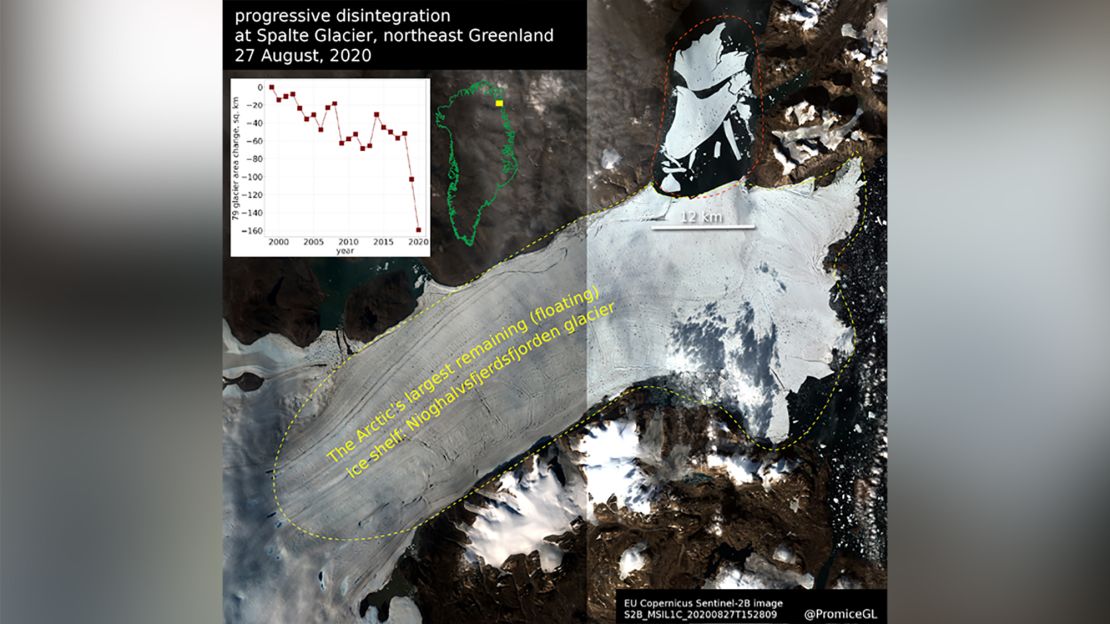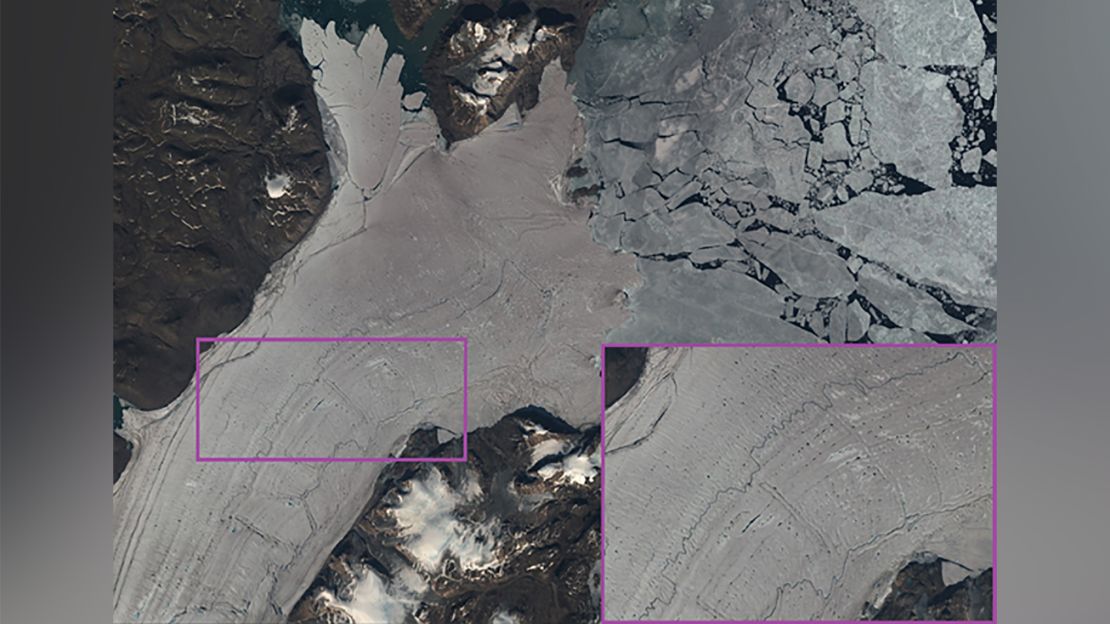A 44-square-mile chunk of ice, about twice the size of Manhattan, has broken off the Arctic’s largest remaining ice shelf in northeast Greenland in the last two years, leaving scientists fearful over its rapid disintegration.
The territory’s ice sheet is the second biggest in the world behind Antarctica’s, and its annual melt contributes more than a millimeter rise to sea levels every year.
“We should be very concerned about what appears to be progressive disintegration at the Arctic’s largest remaining ice shelf, because upstream … is the only major Greenland ice sheet ice stream,” said Jason Box from The Geological Survey of Denmark and Greenland (GEUS) in a statement on Monday.
“These last two summers have been exceptionally warm,” Box said, speaking to CNN Monday.
“The [recent] ice that has broken off is just under … twice the size of Manhattan. [The disintegration] has really picked up these last couple of years.”
The GEUS researchers have been tracking the loss of ice in the area, using optical satellite imagery.
Greenland, the world’s largest island, is located between the Arctic and Atlantic oceans and around 79% of its surface is covered in ice.

As ice near the Earth’s poles melts, sea levels are projected to rise by more than three feet by the end of the century, wiping away beaches and coastal properties.
Since 1999, the Greenland shelf has lost 62 square miles of ice, according to GEUS.
Scientists have repeatedly linked the disintegration of ice sheets to climate change.
“The last few years have been incredibly warm in northeast Greenland,” Jenny Turton, a researcher at Germany’s Friedrich Alexander University said in a statement. “We had very early melt onset in 2019 linked to the heatwave across Europe and Greenland.”
“The atmosphere in this region has warmed by approximately 3 degrees Celsius since 1980 and record-breaking temperatures have been observed in 2019 and 2020,” Turton added.

Environmental campaigners reacted to the new images with concern.
“As the sea ice minimum in the Arctic is set to be one of the lowest ever recorded, another massive chunk of vital sea ice has fallen into the ocean. This is yet another alarm bell being rung by the climate crisis in a rapidly heating Arctic,” Greenpeace Nordic Oceans Campaigner Laura Meller said in a statement.
“When you observe large parts of an ice shelf breaking off you do raise an eyebrow, but with current developments in the Arctic there is also the realization that this is to be expected,” GEUS researcher Niels J. Korsgaard said in a statement.
The new research from GEUS follows a study released last month by Ohio State University, which found that Greenland’s ice sheet had melted to a point of no return.




